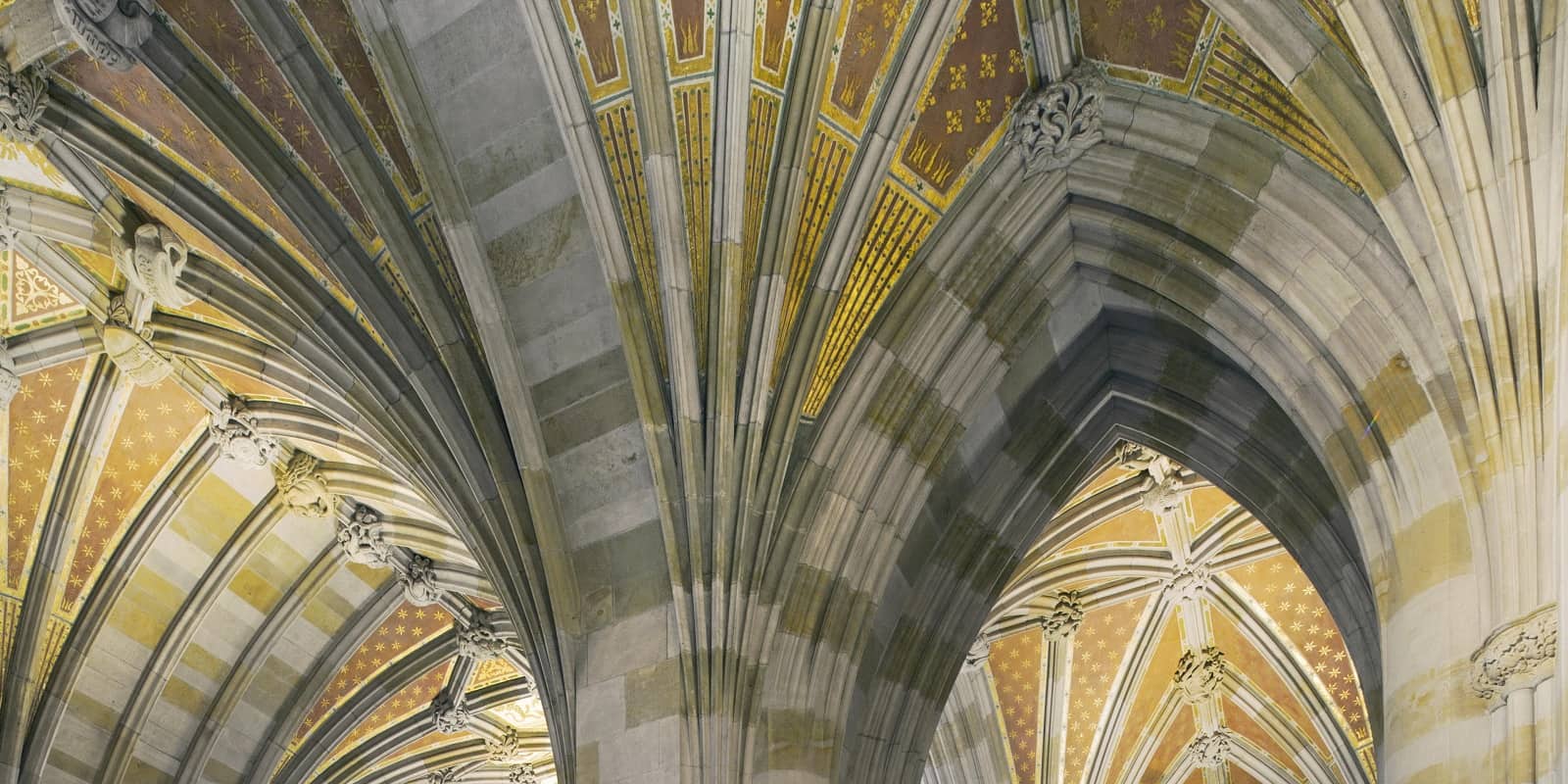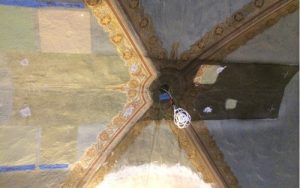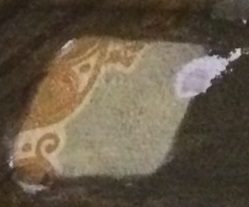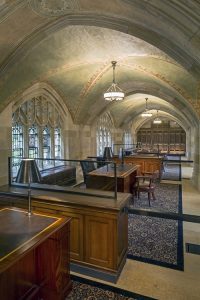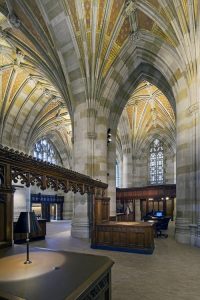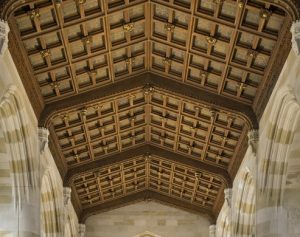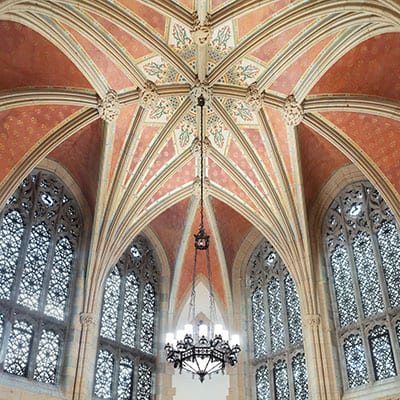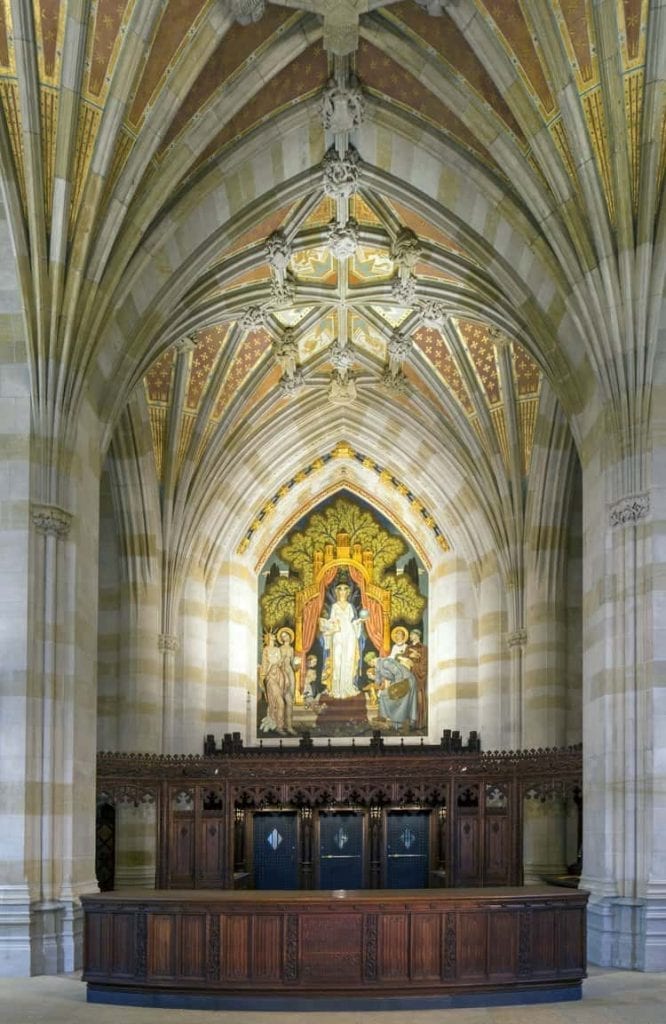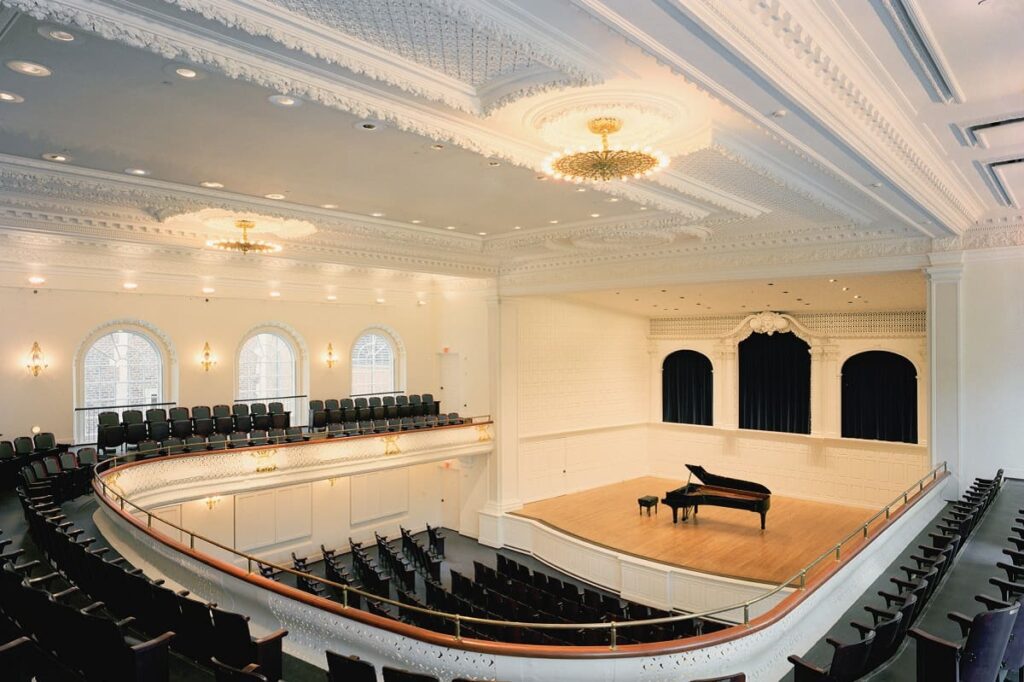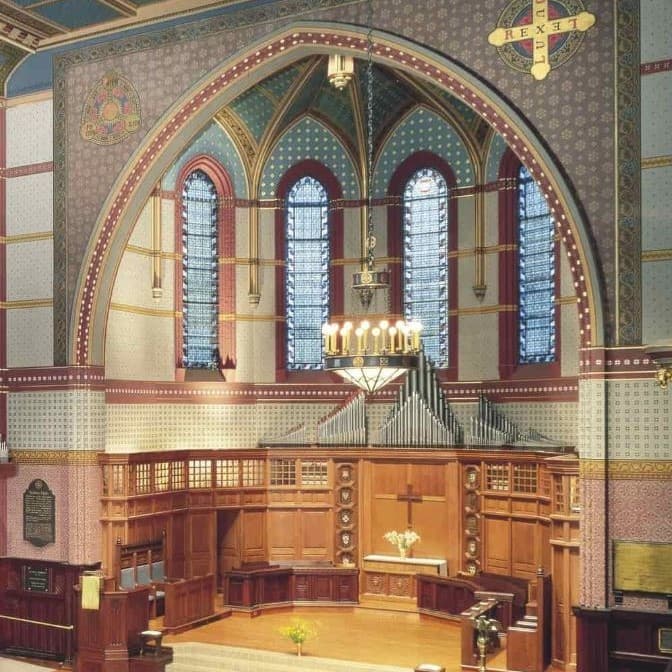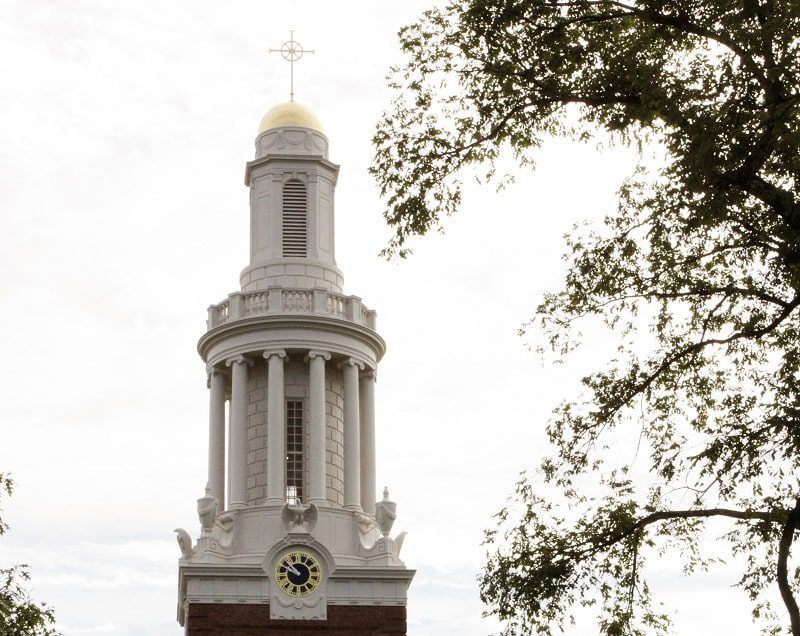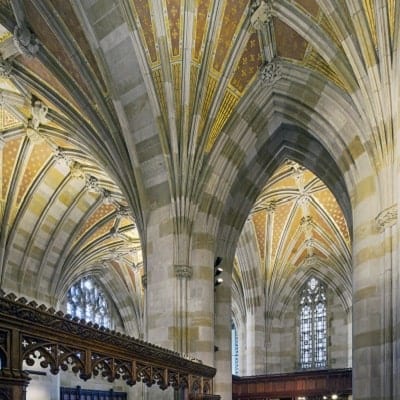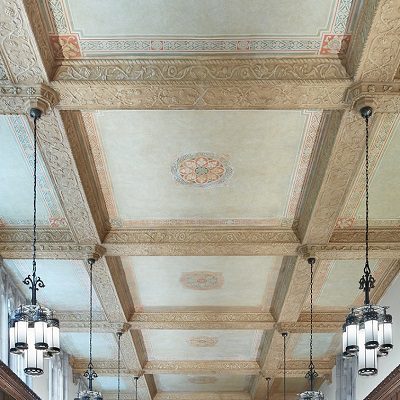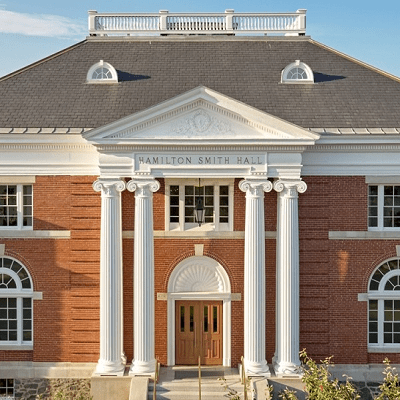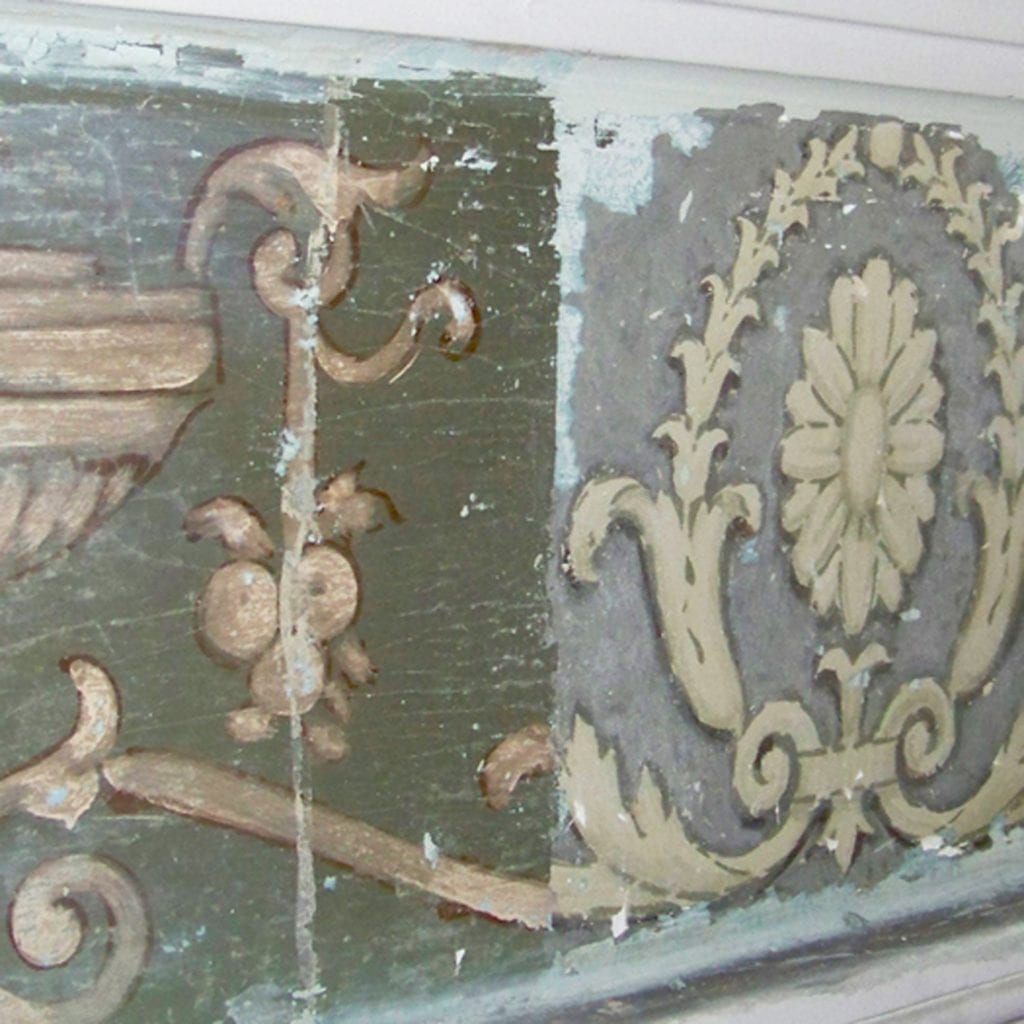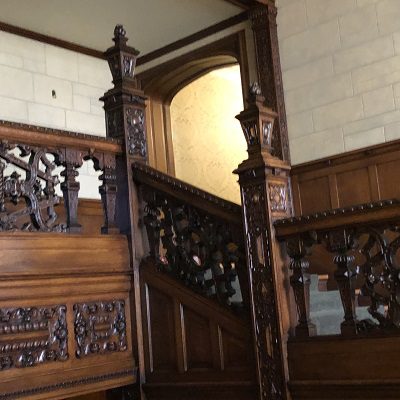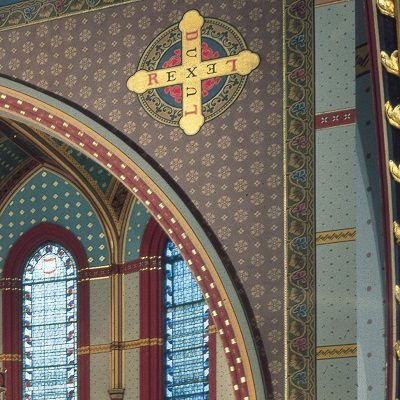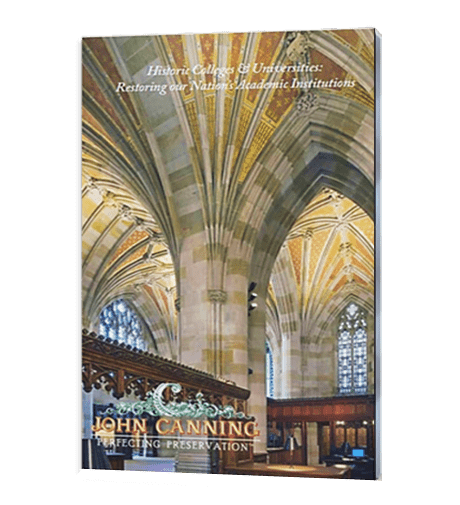We have had the privilege to work on many different projects and at a number of the campus buildings for Yale University over the decades, one of the most notable is the Sterling Memorial Library.
History
Large gifts to Yale from alumni John W. Sterling and the Harkness family funded the 20- year building boom that started in 1921 with Memorial Quadrangle and Harkness tower, James Gamble Rogers’ first project at Yale. He went on to develop Yale’s 1924 master building plan and designed 18 more campus buildings built by 1935, establishing the Yale’s Collegiate Gothic visual identity Rogers “twist” on the popular building style can be summed up with “everything new is old again”. Yale University’s Sterling Memorial Library was built in 1930 and is placed at the heart of the University. The library was designed by James Gamble Rogers as a “cathedral of learning” in the Collegiate Gothic style.
James Gamble Rogers
Preserving the historic finishes of the Sterling Memorial Library required an understanding of Rogers’ original design intent. Rogers’ building style included aging and wearing features and materials to appear as if they were centuries old. Rogers’ own directions found on drawings and other project documents, inform us on exactly how to achieve these aged effects.
These documents confirm his intent that various surfaces be irregular, textured, and distressed so as to simulate old plaster and wood. And, his intent for painted decoration to contain deliberate variations in color washes, finished with rotten stone to achieve an aged patina. His painted decoration effects begin with his treatment for textured plaster substrate “to look like old plaster “.
James Gamble Rogers designed these interiors and finishes to be purposely aged and historic. He went to great lengths/extremes to achieve this aged effect, giving precise instructions for every detail inside and out. Inspired by the century’s old buildings of Oxford and Cambridge, he went as far as intentionally grinding down stair treads, breaking and re-leading window panes, and applying textures and glazes to painted surfaces to appear aged. An essential aspect of preserving these finishes was understanding the traditional materials and methods James Gamble Rogers specified.
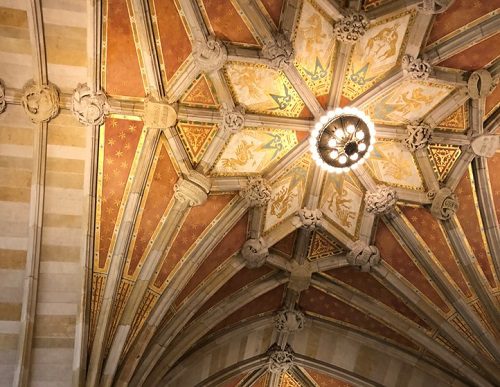
Sterling Memorial Library Ceiling
Sterling Memorial Library Restoration
The key component to the restoration was developing conservation cleaning methods on decoratively painted plaster, and historic woodwork, which would remove decades of dirt and grime while preserving Rogers’ intended patina. Throughout the ceiling, a custom aqueous solution was developed to conserve the textured and decoratively painted plaster ceiling and reliefs. The wood coffered ceiling had areas of water and damage throughout. The ceiling was conserved and restored to a unified finish.
Rogers specified a process for aging wood throughout his buildings. Some of the general direction seems foreign today, but tradesmen in the 1920s and 30s would have understood exactly what he was aiming for and they knew how to achieve it. He spells it out in the plans where the last note states “When finished to look very old”. 80 years of well-meaning maintenance of the woodwork has compromised this ageing effect in many areas throughout the campus with a hodgepodge of tones.
This Sterling Memorial Library project was part of a modernization project for the University and Library staff. Historic woodwork was modified and new pieces incorporated for upgrades. Areas of new woodwork were finished to blend seamlessly with the original, including applying rottenstone at ornamental features, as originally specified by James Gamble Rogers. The conservation cleaning of the coffered ceiling wood work also required a rottenstone treatment to achieve the effect of a weathered, fifteenth-century finish.
The Alma Mater mural, by Eugene Savage, surrounded by allegorical figures and symbols to represent the academic schools, was conserved. Delaminating composite relief was stabilized and gilding restored using historic photographs.
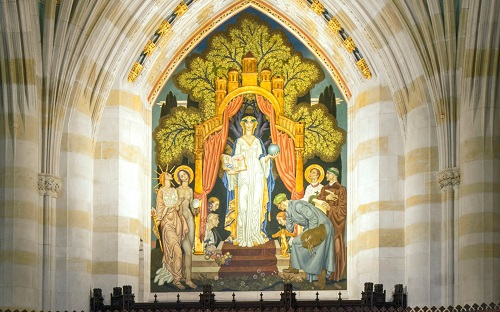
The Alma Mater mural, by Eugene Savage, in Yale’s Sterling Memorial Library.
An essential part of this preservation project was archival research. Original architectural specifications, bulletins, and news articles were reviewed to ensure James Gamble Rogers design intent was preserved and restored.
The proposal shall be based on the use of transparent oil colors, to give the effect of tempera
– James Gamble Rogers specification

Brush stokes and color washes can be seen clearly.
This language in the specification is very important. Again, a tradesman for that period would know exactly how to achieve that, and here you can clearly see the brush strokes and color washes.
Original finish encapsulated by light fixture.
In the North aisle, the ceiling had been overpainted several times, and identifying the historic finish proved difficult. Fortunately, a light fixture probably installed in the 1940s-50s, encapsulated the original finish which contained four different glazes that added to the aged intent of the ceiling. A paint analysis matched the finish to one opaque color, however, using the encapsulated area we were able to replicate the original ceiling finish which contained 4 color washes.

Narthex of the Sterling Memorial Library, showing level at dirt at top, mid-area a result of specified cleaning methods and bottom area is a result of our cleaning system.
In the Narthex of the Sterling Memorial Library, James Gamble Rogers’s treatment included multiple oil color washes over textured plaster with gilded relief ornament. The very top area is accumulated dirt over 80 plus years.
The mid-area is a result of cleaning materials and method specified. It was unsuccessful. So, we were asked to develop a more effective method that would remove the dirt without damaging the original finishes. We did the same thing for the Sky Mural in New York’s Grand Central Terminal. So, we developed an aqueous solution to unlock and solubilize the dirt painted texture surface. The bottom area is result of our cleaning system. Depending on the textures, we would use the solution in a gel form or a poultice to get the best results. Work also included in-painting areas of loss and reinstating missing relief ornamentation.
A good conservation practice is to leave an untreated area for future studies, so we left an area preserved for future reference.
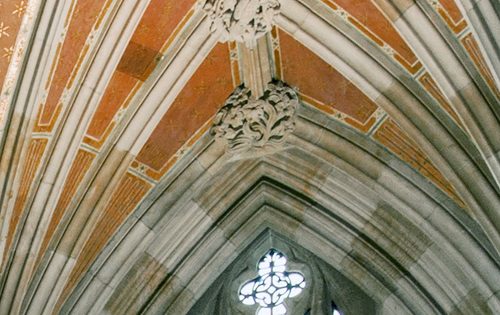
Area of Yale’s Sterling Memorial Library ceiling left untreated, preserved for future reference.
After completion of the restoration and conservation project, the library now looks as is would have originally. The colors, decorations and the techniques implemented to Roger’s original design intent has brought the library back to life for all to enjoy.
Yale’s Sterling Memorial Library after restoration.
Some of our other work at Yale:
The Sterling Memorial Library is an immense structure and seems to never end when one is walking the halls. Other spaces and projects we have worked on that are housed in the library include Manuscripts and Archives and Digital Humanities Lab.
We performed the conservation and restoration of the historic finishes including the preservation of decorative and architectural paint and woodwork in the Manuscripts & Archives. For the Digital Humanities Lab we performed historic wood finishes conservation, conservation cleaning and finished new replacement millwork to match the existing millwork.
We provided plaster restoration and ornamental plaster fabrication in Morse Recital Hall, a performance space at Sprague Hall, Yale University School of Music.
Our conservators and conservation technicians performed masonry conservation, ornamental plaster conservation, conservation of wood finishes, mosaic stabilization and assessment, and some conservation cleaning of various elements at the Schwarzman Center.
For the Graduate Studies (320 York St) we performed architectural and fine art conservation of the oil painted wood ceiling. Services included the documentation and examination of the artwork, recommendations for conservation followed with the conservation cleaning and inpainting.
The process of archival research, hands-on investigation, scientific analysis, and interpretation led to the successful restoration of Battell Chapel’s original Victorian-era decorative painting scheme. The Battell Chapel restoration was one of the earliest historic preservation projects in Connecticut and John Canning & Co.’s first comprehensive church restoration in the US.

